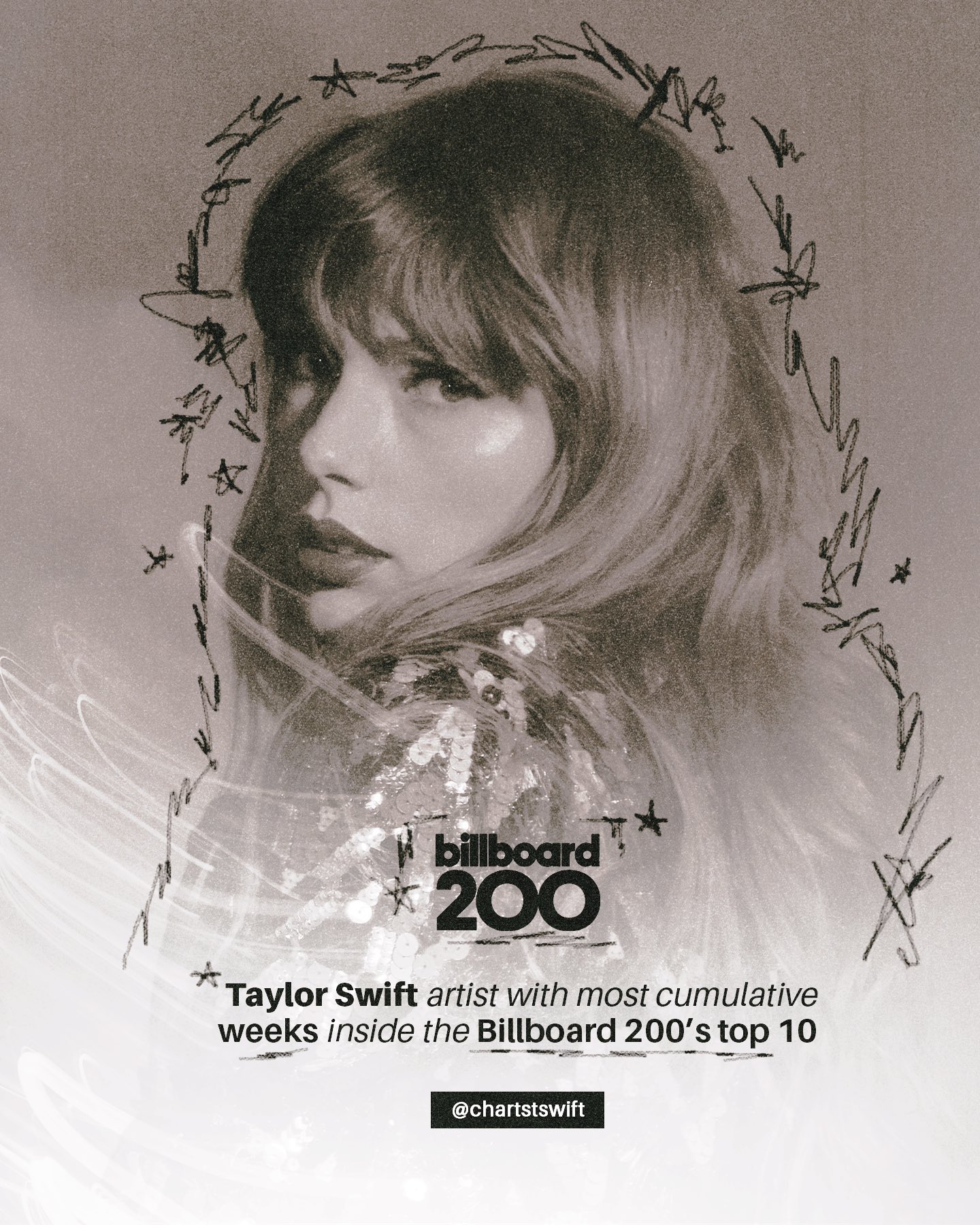Taylor Swift breaks another Billboard chart record, surpassing The Beatles for the most weeks spent in the top ten of the Billboard 200 albums chart in the previous 60 years across all of her top-charting albums combined.

Swift has three albums in the top ten on the most recent Billboard 200 list (dated March 2), bringing her total number of weeks in the top ten to 384 across all of her 16 top-charting albums combined. She is in the top ten on the most recent list, with three previous No. 1s: 1989 (Taylor’s Version) at No. 6, Lover at No. 7, and Midnights at No. 9. (While all three albums are in the top ten in a single week, they add three weeks to her total.)
Since the Billboard 200 combined its formerly distinct mono and stereo album rankings on August 17, 1963, Swift has spent the longest time in the top ten. She surpasses The Beatles, who spent a total of 382 weeks in the top ten with their 32 top-charting albums. (The Billboard 200 began publishing on a weekly basis in March 1956.)
Swift first reached the top ten on the November 24, 2007 chart, when her self-titled debut climbed 26-8. The Beatles first reached the top ten on the February 8, 1964, chart, when Meet the Beatles! soared 92-3. The Beatles were last in the top ten on the chart dated November 12, 2022, when a deluxe version of their 1966 album Revolver re-entered at No. 4.
Midnights, Swift’s top-charting album, has spent the most time in the top ten, with 68 weeks. It is followed by 1989 (60), Fearless (58), Lover (54), and Folklore (30).
The Beatles’ five albums with the most weeks in the top ten are Sgt. Pepper’s Lonely Hearts Club Band (35), Abbey Road, A Hard Day’s Night (28), Meet the Beatles! (21) and 1 (20).
The Rolling Stones (with 309), Barbra Streisand (277), Drake, and Mariah Carey (233 each) follow Swift and The Beatles as the acts with the most weeks in the top ten (since August 1963).
The Billboard 200 list ranks the most popular albums of the week in the United States based on multimetric consumption measured in equivalent album units, according to Luminate. Album sales, track equivalent albums, and streaming equivalent albums are all considered units.  Each unit represents one album sale, 10 individual tracks sold from an album, or 3,750 ad-supported or 1,250 paid/subscription on-demand official audio and video streams generated by songs from an album. The full chart for March 2, 2024 will be available on Billboard’s website on February 27. Follow @billboard and @billboardcharts on X and Instagram for the most recent chart updates.
Each unit represents one album sale, 10 individual tracks sold from an album, or 3,750 ad-supported or 1,250 paid/subscription on-demand official audio and video streams generated by songs from an album. The full chart for March 2, 2024 will be available on Billboard’s website on February 27. Follow @billboard and @billboardcharts on X and Instagram for the most recent chart updates.